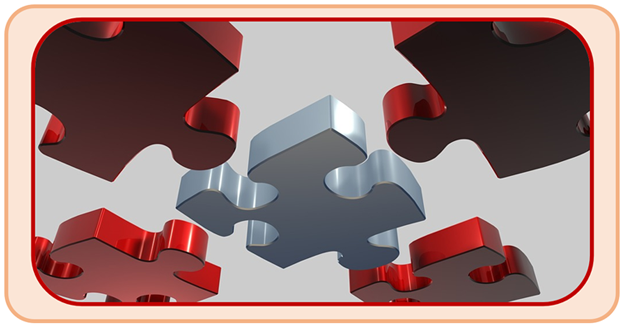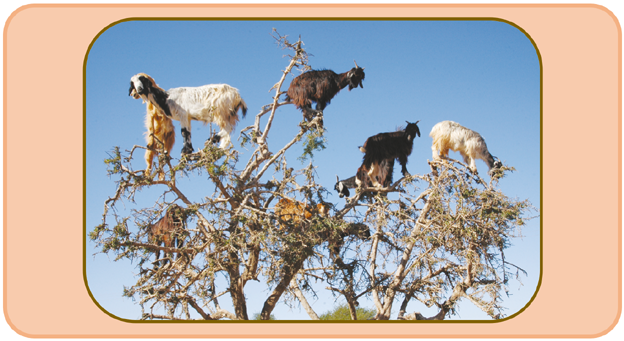
Dave Waters, Director & Geoscience Consultant, Paetoro Consulting UK Ltd
Choice and Voice
The world has come to be filled with a bewildering array of energy options. The voices promoting this that and the other are loud and forceful. Some are altogether sincere and credible. Others perhaps having greater question marks in our mind. The arguments for any one thing can often sound compelling until we hear the caveats and the arguments of others. How fully do any of these voices have an awareness of the merits and issues attached to all the options available? These are all very valid questions.

So many voices saying so many things
This tells us two key things as we evaluate paths forward. Firstly, it is key to know what we want most. To know priorities. To know what question or questions we are asking most vehemently. To know the problem or problems we want to address and which ones matter. This will vary by place and time and community.
It is of course rarely that simple, and usually we go into problems with a whole host of priorities, not just one clear one. Nevertheless, the process of prioritising – of quantitatively weighting what we want to do most - is a useful thought experiment. It helps us all to not get distracted by the wrapping papers and to select the gift that matters most.

What do we want, really, really want?
Geospacetime
Amidst the bewildering ambush of ideas and technologies, one of the most exciting themes heading into 2023 is less than obvious. Geospatial problem-solving process.
At this point all sorts of shiny bright new technologies come onto the playing field. Modelling softwares, AI approaches. They all have their benefits and their attractions and ways they can help. I’d argue though that much which can help, doesn’t have to be too sophisticated. Often simple collation and integration of the right pieces of information can facilitate fresh insight into key sensitivities. The ones we have identified as our priorities.
Models can be complex or they can be very simple. Often it doesn’t take too much resolution to get a very good idea of some important things. A rose for example is a complex thing, but from six colours in fairly simple shapes, we see all we need to convey it to a surprisingly good level of understanding.
Mining some set of parameters to ever increasing levels of detail might tell us something, but sometimes what tells us a whole lot more a whole lot quicker is simply throwing another parameter in the picture, even if the resolution is coarse. It might be great having a clever oven but throwing the right set of ingredients together is far more important than the cleverest cooking sequence. And I don’t know about you, but the best pizza’s I’ve ever tasted have had a simple mix of ingredients, in an astute blend.

Of making models
A lot of what I try to do myself is to throw together interesting combinations of data in ways it hasn’t been attempted before. There are parties that can do it in a much more sophisticated way than I can. There is however something to be said for doing it in a simple way. It allows things to be unravelled and audited more easily. To look at sensitivities more clearly. The more sophisticated a model is, the harder it is to truly audit it. Sometimes we don’t need a sophisticated model, we just need to look at things that haven’t been put together before. It’s more an issue of imagination than it is of programming sophistication.

The data deluge
The biggest problems in this arena are not always that ultra-complicated. It is the same problem that everyone grapples with. Amidst all the huge amounts of data everywhere, the problem of how to collate and combine it efficiently. It is in the final analysis a data management problem. Far from taking things into the mundane, this takes the issue into the truly generic and empowering. Find the pathway for one subject and an explosion of forward paths opens ahead. We don’t need a supercomputer to do it.
As a researcher in 2022/2023, whenever addressing any particular question – the wealth and diversity of geospatial map information available is often daunting. I am always struck by how complex and sophisticated the modelling has become for some parameters (because it can), yet also how sometimes very important and very simple things are not put together to examine relationships.
The ability to do so these days is itself increasing in sophistication. AI techniques can examine for relationships in a multiverse of parameter dimensions. Yet here again we can get too far down a rabbit hole too quickly too easily. If we cannot audit how something has got to a conclusion, we are left none the wiser. The essence of sensitivity analysis is being able to combine and interrogate many things, but also to know what has caused an effect. What happens when one thing is changed.
I often work with geoscience, commercial, and social and environmental data, to observe combinations that are new, and tailored around specific questions. It is the designing of the right question that truly intrigues me. We may have the most sophisticated model in the universe, but if it isn’t asking the right question, it’s not going to help us.

Integrating
To process and purpose
The cacophony of voices shouting for one thing and trying to shout every other one down right now is a bit deafening, and not infrequently, a bit depressing. Meanwhile all sorts of institutions, including central government itself, find themselves having to navigate a way through the maze of all the alternatives and all the opinions. The experts are not unanimous, so leaving it all to the experts is not by itself enough. In this context, I sense so much effort is wasted on asking what option to choose before we have really settled on which question we most want answered.
That is a recipe for confusion and distraction, and for being led up a garden path by the first answer that sounds plausible. If you don’t know what question you are asking, you don’t know what you should be measuring/auditing. Whether we should choose a specific option from amongst many is the wrong first question to begin with. It’s not an unreasonable question per se, but its not the place to start.
The correct place to begin, is in examining what the priority question being asked is, the priorities of any other questions, and what protocol is being deployed for determining the answer. That is to say, what things will we measure or observe to know what is working? The ultimate answer may prove to involve many options, or it may be one thing, but it is possible to leave that conclusion to later. If we define the path-setting criteria to get somewhere, the destination will follow.
The first thing to decide is - what do we want to achieve, what are the problems we want to avoid, and how are we going to determine which things are meeting those criteria. If we make clear in our heads what those priorities are, the best options sort themselves out later according to the determined protocol. Not what our mates say. Not our gut instinct. Not what preserves most jobs for our own sector. Not who has the best PR machine, but a consistent protocol applied fairly, ubiquitously, consistently, to all-comers.
Defining a question
The question itself, in this protocol, can be as simple or as complicated as we like, but it has to be measurable. There have to be identifiable metrics we can refer to, in order to help answer the question. They don’t have to be exact, or perfectly known. They may be very uncertain – but they need to be estimable. Estimable either in a Boolean yes/no sense, or quantifiably – a number and range with an estimable probability distribution function. The aim here is not to be perfectly accurate in every sense. The aim is to develop a consistent route through the maze, for analysis to compare different options. If it is not quantitative and measureable the result becomes once again, a morass of opinion and soundbite driven unquantified concepts - a quagmire of impasse.

A mazing race
To give you an example of what a question might look like – it could take the following forms:
- How reduce emissions the most. (ktCO2e)
- How to reduce emissions the most in the next twenty years on existing technology.
- How to reduce emissions the most in the next twenty years on existing technology, most cheaply for a given carbon tax rate. (ktCO2e, £)
- How to reduce emissions the most in the next twenty years on existing technology, most cheaply for a given carbon tax rate, without annual demand reduction exceeding X%. (ktCO2e, £, GWh).
Here we see how any one question can be refined but refined by things that are measurable or estimable.
This isn’t going to be easy or immediate
Juggernauts take a while to turn. The present is not representative. Oil and gas as commodities themselves took over a century to reach their current crescendo.
That means there is a lot of time for a lot of things that are around now to develop beyond our current imaginations. That’s not saying everything will, or that laws of physics can somehow be subverted by positive thinking. They can’t. Rather it is to observe that some things have obvious drawbacks to their deployment, but which at first glance also have technical workarounds. Wind and solar are a good example, in that they don’t happen all the time. It is however lacking imagination though to think that there are no future combinations of things that can assist with these problems in the future. Energy storage, distal transmission, smart demand management, etc.
That doesn’t mean we should automatically unthinkingly pick renewables. Perhaps they will end up much more important, but the purpose of the illustration is not to pick or point at renewables. It is to show that we should not think that our imaginations can perceive every future possibility now. We cannot really know what will work best in the future. What we can do now is identify the problems we want to tackle, and the metrics which measure them. How much they can assist in a distal tomorrow’s world is anyone’s guess, but the point is, we don’t choose now, we choose the criteria by which are going to choose in the future.
It will be a long and winding road, and we don’t necessarily need to know through the far mist of time what the final destination is for a particular question - but we can define what a road looks like – in order to stay on the route to answering it sensibly.

We're on a road to somewhere
A summary of some takeaways:
- Amidst a plethora of voices, distractions, and confusions, know our priorities
- Know the question we are asking, and the problems we wish to address
- Understand that priorities can change as a function of community, place, time – and that this can be built into our key question
- Know how to measure success – identify the metrics which allow quantitative assessment of it.
- Integrate information imaginatively, geospatially, to address the question
- Model sophistication can be a distraction – having the right collective of parameters to hand, to whatever resolution we can summon, is more important
- Protocols for efficient and often simple management of data are critical path, particularly collation and combination
- Sensitivity analysis is critical to addressing the question of interest. If we can’t interrogate a modelled outcome to know clearly what influenced it, it is of little learning use.
- Experts are not unanimous. More is needed than expertise alone. Expertise is very necessary but not in itself sufficient.
- That said, unanimity is not the requirement. Making it so is a recipe for a paralysis. The requirement is for consistent method. That allows for monitoring and for course correction should it be needed.
- We should not fool ourselves we can pick the best options if we have not defined our key question, ranked our priorities, and defined quantitative metrics of interest. A protocol.
- The proposition concerns actions that begin now but which involve centuries. Progress will be measured on similar timescales. Lack of progress is not discerned at smaller timescales. Things take time. Attitudes too. The latter is often the key catalyst. Attitudes have a very strong link to priorities. Defining our priorities empowers mobilisation of attitude.
From protocols to politics and policy
The subject matter here is unapologetically abstract and to a degree philosophical. Yet who amongst us doesn’t tire of endless catfights between this option and that, and logic (or absence of it) that swings all over the place. It is in this environment of mayhem one can perceive that prioritisation, process, protocol, is the key enabler. Not another isolated qualitative-only conceptual argument about why X or Y is the solution. Instead, a clear identification of problems and priorities, and metrics to quantitatively measure them. When that is achieved, then a route for assessing any option that comes to the table is achieved. There is no call to shout it up or shout it down. The numbers are crunched according to the question defined and the misty road to nowhere suddenly becomes a fog-lifting road to somewhere.
Easy? No. However, until there is clarification of the agreed problem, we ain’t going to fix it. To be clear, there will never be unanimity on that, and that’s OK. This is where elections come in to help - it's sort of what we should be voting for - not some specific technical option, but the party that has correctly, for us, identified the right problem. The right priorities.
That should be the politician’s job. Identifying the problem, identifying the priorities, requiring of policy. It is worthy of repeating. Once that is done, the technical experts can take it from there, to define the protocol – and hence to define the option or mix of options which best address it. We vote in a democracy for the priorities we most adhere to, not the technical expertise of politicians.
If we find ourselves in a place where our politicians are picking the technical options, we have lost our way. They may mean well, but that is not their role. They may think they know enough to make those decisions, but if so that is even worse and even more dangerous. In a lot of countries sadly that is where we find ourselves right now. Politicians that think they know enough themselves to decide.
To be fair, that is because a lot is in flux and it is confusing for everyone. No, their job, and it is a needed one, is to present a manifesto that defines their prioritisations of problem. Then to engage technical experts to convert a protocol derived with those priorities in mind into meaningful policy.

Prioritising problems, not picking pet projects
We stand at a bit of a crossroads in 2023, and to be optimistic for a moment, I think we stand there with a growing maturity concerning the complexity of the problems we face. While it is bad news that it is not simple to fix, it is good news that we are at last coming to realise the daunting extent to which that is true.
The way forward is not to cherry pick winners thinking we can do so easily, but rather to define and rank the problems which are most urgent. Craft metrics which measure them and then appraise the best options to address them, according to expertly designed technical protocols, being disciplined and undistracted in our assignment of designated priorities. Doing this consistently, transparently, auditably across sectors
The power of process. Not lobbying and pet project picking. Not persuasion through force of soundbite. Quantitative metrics. Quantitative protocols. The power of process. Reinforced in policy.

Because we can
KeyFacts Energy Industry Directory: Paetoro Consulting
 KEYFACT Energy
KEYFACT Energy